
Slow Furl
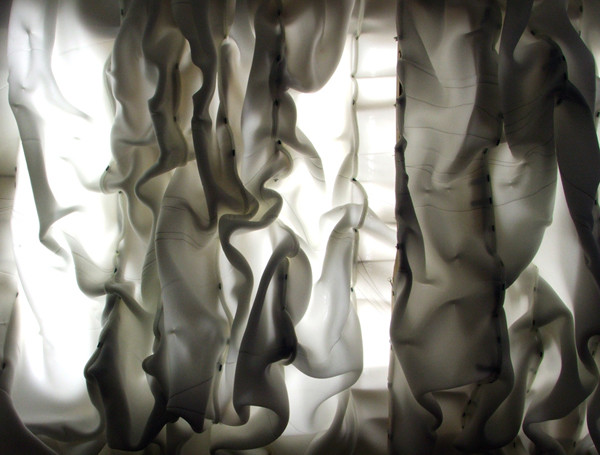
A research project by CITA.
Slow Furl is the making of a room size textile installation that acts and reacts on its inhabitation. The installation exists as a soft and pliable skin that lines the Lighthouse space. The skin shifts. As guests enter and move within the foyer, the skin moves imperceptibly at deep timeframes, creating new cavities and spaces, revealing slits and apertures.
The project explores the notion of flow. Rather than fixing the digital in a responsive relationship to the user, where every call defines a reply, Slow Furl finds its temporality outside the immediately animate. The thick skin envelops the space in a deep furl. Like a glacier, this robotic membrane, is formed by its slow action, reacting imperceptibly to its inhabitation.
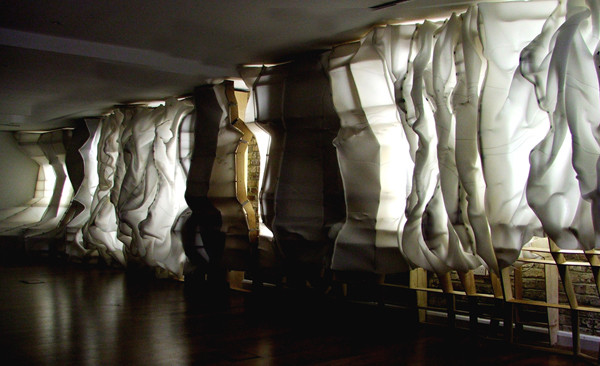
Slow Furl is playful environment that engages the physical presence of its guests. Users are invited to touch or sit within its soft skins. As they do they feel the slow pulse of it’s movements. As a landscape, a cloud formation or an ice wall, it forms and reforms around the body of its user.
Slow Furl is the making of a cybernetic environment that holds its own patterns of action and reaction. Conceived as an organism of interacting subsystems, the architecture holds an own motility, an own language of movements that defines its behavioural patterning. The skin clads a dynamic armature creating the possibility for movement. The armature is understood as a distributed computational system where separate parts hold their own potential for actuation. Each arm is controlled by a stand alone micro-controller that activates its mechanical movements. The skin acts as a unifier. Cladding the whole of the surface, the skin joins the movement of the individual arms into one fluid surface.
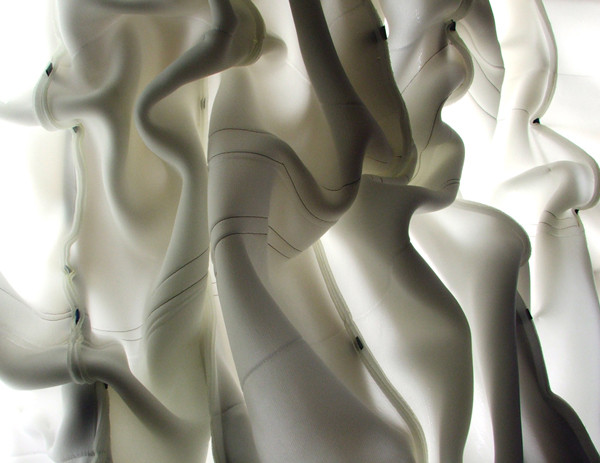
The skin also acts as a sensory system. Active patches are embroidered into the skin. These patches act on touch. As the skin moves, it activates the micro-controller. The simple shift between self activation (through the movement cycles of the armature) and
interaction (through touch and movement of the users) allows the organism to engage an inherent indeterminacy. The architecture is behavioural rather than interactive, mobile rather than animate.
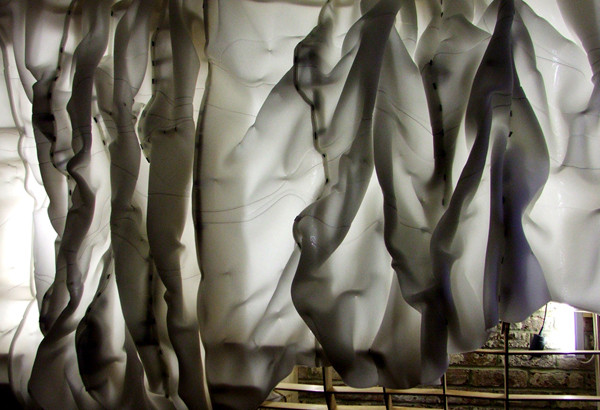
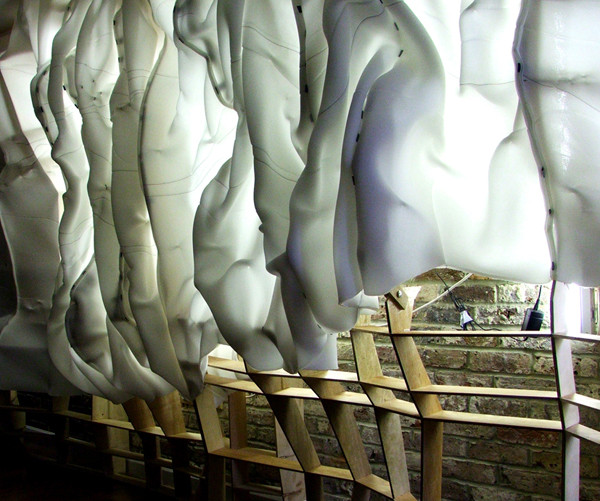
INTERArChTIVE is a consortium of Lighthouse (Brighton), Architecture Centre Network, interactivearchitecture.org and RIBA (Sussex branch). Collaborators
Mette Ramsgard Thomsen
Karin Bech
Venue
Slow furl was exhibited at The Lighthouse Gallery, June 08.
Support
Slow Furl is sponsored by InterARCHtive commission from Arts Council England, Royal Institute for British Architects RIBA, University of Brighton and CITA (Centre for Information Technology and Architecture). Further sponsorship was received from Hobbs Construction, Bernina Denmark, Heathcoat Ltd and ACS Lasercutting.
Slow Furl has received funding from the Arts Council England, Lighthouse (Brighton) and RIBA (Sussex Branch) as well as the sponsorship of academic and industrial partners. We would like to thank the following institutions and companies for their invaluable help and support. University of Brighton, School of Design and Architecture, CITA, Centre for IT and Architecture,
Royal Danish Academy of Fine Arts, School of Architecture, WE Design CPH, Hobbs Construction Ltd, Heathcoat Ltd, Bernina Denmark and Automated Cutting Services.
bb
Publications
Ramsgard Thomsen, M.
"Textile Logics in a Moving Architecture"
Transitive Materials Workshop, CHI Computer Human Interface 2009 CHI2009 Workshop "Programming Reality: From Transitive Materials to Organic User Interfaces", April 09
Ramsgard Thomsen, M. , Hicks, T.
"To build a Knitted Wall"
Proceedings, Ambience, smart textiles conference, Gøteborg, April 2008
Delfs, T.
"Den Tekstile Tænkemåde: Mette Ramsgaard Thomsen"
Kunstuff, 2009 (22) p. 18-22-














